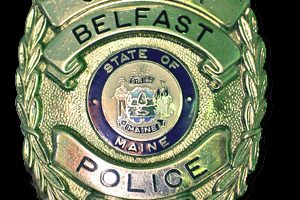New Belfast police chief hopes to bring drug intervention program to RSU 71

Belfast Police Chief Robert Cormier met with school officials last month to discuss bringing the Law Enforcement Against Drugs intervention program to Regional School District 71 middle and high schoolers.
The chief introduced the program to students in New Hampshire when he was chief of the Tilton police department, he said. The program is taught by a police officer and teacher and covers various topics aimed to educate children on addiction and substance use.
When the opioid crisis first hit New Hampshire hard in 2015, Cormier’s department was responding to overdoses daily, he said. He started searching for a way to address an addiction crisis that seemed to be killing people more than the state had previously experienced.
“We were seeing, you know, overdoses daily, weekly around the state and we knew that we needed to, as part of a solution to problem, we needed to address prevention and stop that cycle,” he said.
One of the ways he wanted to combat addiction was to get ahead of it before people started experimenting with the deadly substances, he said. He wanted to get an intervention program into schools to help prevent kids from using drugs and becoming addicted.
After talking with people who were actively using substances and people who were in recovering from being addicted to substances, he found that they all seemed to agree that middle school seemed to be years they were most susceptible to substance use, he said.
Teachers and parents also seemed to agree that seventh, eighth and ninth grades seemed to be the best years to reach students before they had a chance to start using substances, he said.
“So you look at K-12, where is the best place to put the program? Where (are) the most critical years to reach out to students,” he said. “Talking with teachers and parents, we all agree, that grades seven, eight, nine are the years we want to focus on.”
He first introduced the program to a seventh grade class for one semester as a pilot, he said. The department pairs teachers, who know how to control and engage students, and officers, who are the first responders to many addiction issues in the community, to teach predesigned lessons through LEAD.
The program uses age-appropriate real-life examples of situations kids find themselves in, the chief said. The examples vary by age and grade level. The program does not dive much into mental health but it does address different adversities that make people more susceptible to addiction.
It helps kids understand the process of how people become addicted, how easy it is to become addicted and how to reverse that path, he said. The idea is to prevent children from trying substance at all because addiction can take hold of people after even the first use.
Students learn how to keep themselves out of potentially dangerous situations and inform teachers or a trusted adult if they think something is not right, he said.
Knowledge students learn during the course is often taken home where some kids have parents or siblings dealing with substance use, he said. Teachers and officers are careful not to disparage family members struggling with substance use, instead teaching kids how to empathize with and understand those family members better.
“What we don’t want to do is if their parents, brothers or sisters are experimenting or addicted to drugs, we don’t want to paint them in a negative light to their kids or brothers and sisters,” he said.
He found the program to be very successful in New Hampshire and students were asking to have more lessons in their following eighth grade school year, he said.
The chief hopes to use drug forfeiture funds to pay for the program in part, he said at a July City Council meeting. But forfeiture funds will not be sufficient to cover the entire cost of the program because the department does not usually recover much in forfeiture funds per year.
Cost is broken into two areas, officer and teacher training and the cost of the materials, he said. The booklets are bought new each year and cost from $500 to $700 to supply students with the materials in three different grades each year.
Regional School Unit 71 Superintendent Mary Alice McLean said in an email to The Republican Journal that she is eager to learn more about the program but did not comment further.
Troy Howard Middle School Principal Bruce Bailey was impressed with the chief’s desire to build relationships among department officers, school staff and students, he said in an email to The Republican Journal. He thinks it is a good way to extend the district’s relationship with the department beyond just that of School Resource Officer Rick Smith.
“We are always looking for opportunities for our students to explore career options and to connect with positive community mentors and this aligns with that goal as well,” he said.
Part of Cormier’s goal to implement this program in schools is to connect officers with students, he said. There are some students whose only interaction with officers is when they are responding to incidents at their homes and seeing these officers in school could make them feel more comfortable with them, resulting in a bond that could make students think twice before engaging in risky behavior.
“It builds better relationships between the officers and students both in the classroom and on the street,” he said.
For more information on L.E.A.D., please visit www.leadrugs.org
Original article: https://waldo.villagesoup.com/2022/09/11/new-belfast-police-chief-hopes-to-bring-drug-intervention-program-to-rsu-71/

